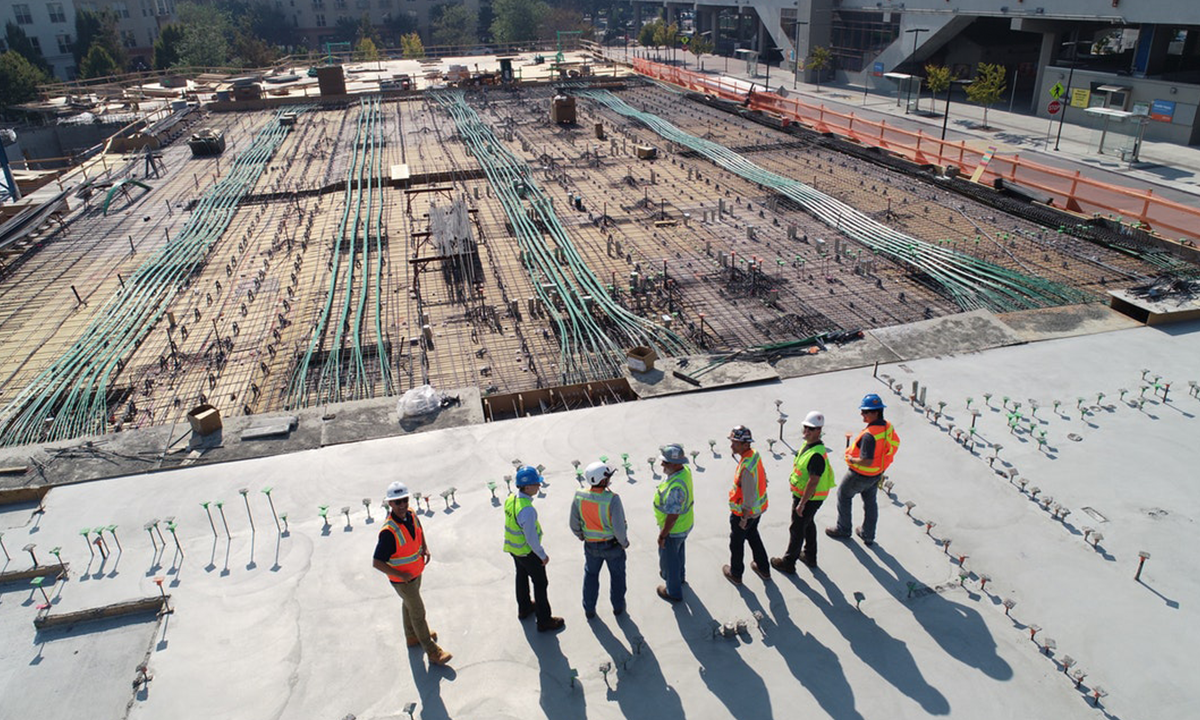Believe it or not, today, robots can lay bricks. One thousand bricks an hour to be precise. While the construction industry as a whole has been slow in adopting new techniques, robots are now one of the many emerging technologies that are reshaping the industry.
Contractors and construction companies are using the practical application of computer science to design and construct buildings, which is essential in today’s digital era. Utilizing tech that’s already out there is important to not only improve the industry itself but also to attract younger, tech-savvy generations to jobs in the sector.
Here are a few other examples of construction technologies that are being used by building project stakeholders to improve collaboration, productivity, and safety.
- Project management software
- Mobile apps
- Artificial intelligence
- Augmented and virtual reality
- Wearable sensors
- Drones
The Construction Industry Is Finally Embracing Technology
Construction projects are notorious for two things. First, being over budget. Second, taking longer than planned.
Unlike the retail industry, which is continuously embracing new technologies, the construction industry has been slow to adopt digital tools.
The reasons that have impeded the industry's movement toward technology include:
- Geographically dispersed project sites
- Paper-based information limiting widespread sharing
- Slow decision making due to fragmented work sites and limited data sharing
- Lack of time and constrained budgets to innovate
- Lack of collaboration among stakeholders
These very inefficiencies are the reason the building industry should embrace new technology.
What Does Construction Technology Look Like?
Improved collaboration, productivity, and safety work together to produce cost and time savings. Leaving paper behind for cloud-based software solutions helps stakeholders coordinate.
Mobile meeting technology allows managers to stay at a job site rather than driving to an office. Augmented reality allows a change in design drawings to be shared real-time.
Collaboration
Collaboration requires communication. Sharing information among the many stakeholders that make a construction project successful is critical.
If you’re a decision-maker in the building industry, you’ve heard of Building Information Modeling. BIM is a digital representation of the physical and functional characteristics of a building.
BIMs are shared knowledge resources. They allow stakeholders to make decisions about a building from conception to demolition.
A McKinsey study found that 75 percent of those in the building industry that had adopted BIM had:
- positive returns on their investment
- shorter project timelines
- savings on material costs
Data for BIMs is collected in many different ways. Two examples are drones and wearable sensors. Changes to BIMs happen real-time. The means updates are instantly shared with all team members.
Productivity
Productivity is paramount to meeting timelines and budget constraints. Reliance on paper in the building industry is a drag on productivity. Blueprints, supply-chain orders, and punch lists are a few of the items that can change on a daily basis.
If these items are digitized and cloud-based, owners and contractors are able to make decisions based on the same version of documents.
Drones are used to inform stakeholders of daily work conditions and daily progress. Measuring daily progress can enhance performance management.
Augmented reality tools like Microsoft’s HoloLens allows workers to review blueprints. The blueprints get overlaid in the context of the physical environment. This saves time and reduces errors.
Safety
Safety and training of workers are critical factors in successful building projects. Construction technology allows for better monitoring of workers with wearable sensors.
For example, workers can wear a hard hat or safety goggles that monitor where they are on a job site. Safety reminders or other messages can pop up on the hat or goggles.
Training can be improved with lower costs and lower risk of injury. With virtual reality, workers can practice a task in a controlled virtual setting.
Augmented reality allows workers to train on actual heavy equipment on actual job sites with augmented hazards.
Why You Should Care about Technology in Construction
Between 2016 and 2026, the demand for workers in construction will increase by 11 percent. Digital training and workflow will streamline learning for new construction workers.
Recognizing this growth, construction technology is becoming a well-funded investment niche.
Investments totaling over $1 billion went into construction technology start-ups in 2018. Digital collaboration and mobility solutions dominated venture funding in the construction tech sector.
To learn more about how technology solutions can improve margins for your construction business, reach out to us. Whatever your particular needs, we are here to collaborate with you and be your trusted partner.
.png?width=191&name=mgalogofinal-01%20(3).png)


.png)


